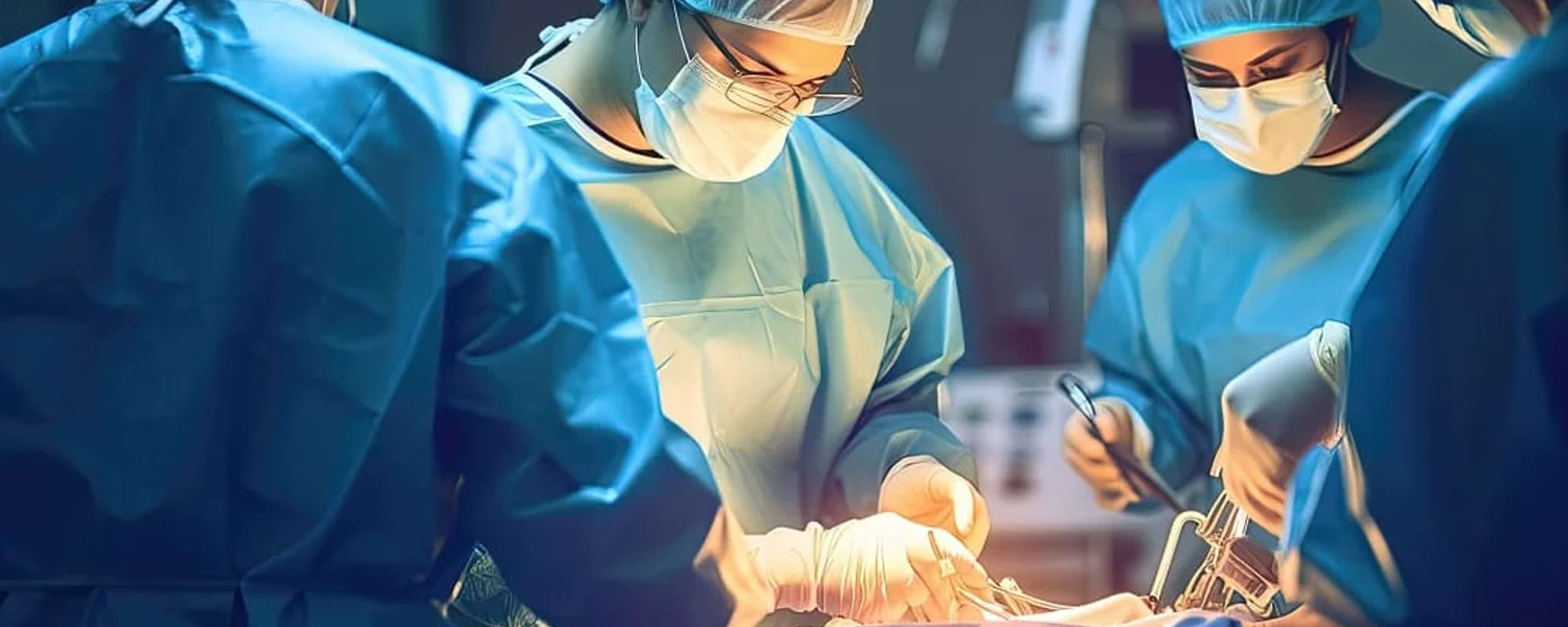LAPAROSCOPY
Laparoscopy: Revolutionizing Minimally Invasive Surgery
Introduction: Laparoscopy, also known as minimally invasive surgery (MIS), has transformed the landscape of surgical interventions, offering patients and healthcare professionals a less invasive alternative to traditional open surgeries. This revolutionary approach involves the use of small incisions, specialized instruments, and a laparoscope—a thin, illuminated tube with a camera—to visualize and perform surgical procedures inside the abdominal or pelvic cavities. The laparoscopic technique has gained widespread acceptance across various medical specialties, proving particularly beneficial in gynecology, urology, general surgery, and more.
Key Components of Laparoscopy:
-
Laparoscope:
- The laparoscope is a pivotal component, resembling a long, thin tube equipped with a light source and a high-resolution camera at its tip.
- It is inserted through a small incision, providing real-time, magnified images of the internal organs on a monitor, allowing surgeons to navigate and perform precise maneuvers.
-
Trocar and Cannulas:
- Trocars are specialized instruments that create access points for the laparoscope and other surgical instruments.
- Cannulas are inserted through trocars to maintain a stable passage for instruments, facilitating the surgeon's work without causing unnecessary trauma.
-
Specialized Instruments:
- Laparoscopic instruments are designed with long, slender shafts and articulating tips to replicate the range of motion of the human hand.
- Instruments such as graspers, scissors, and electrocautery devices enable surgeons to perform a wide array of procedures with precision.
Applications of Laparoscopy:
-
Gynecology:
- Laparoscopy has revolutionized gynecological surgery, enabling procedures like hysterectomy, myomectomy (fibroid removal), and ovarian cystectomy with smaller incisions.
- It is widely used for diagnosing and treating conditions like endometriosis, pelvic inflammatory disease (PID), and infertility.
-
General Surgery:
- In general surgery, laparoscopy has become a preferred approach for procedures such as cholecystectomy (gallbladder removal), appendectomy, and hernia repair.
- Patients benefit from reduced postoperative pain, quicker recovery, and shorter hospital stays compared to open surgery.
-
Urology:
- Laparoscopic techniques are applied in urology for procedures like nephrectomy (kidney removal), prostatectomy, and pyeloplasty.
- The minimally invasive nature of laparoscopy is associated with less blood loss, lower risk of infection, and improved cosmetic outcomes.
-
Colorectal Surgery:
- Colorectal procedures, including colectomy and rectal resection, can be performed using laparoscopic techniques.
- Patients experience less pain, reduced scarring, and faster return to normal activities compared to traditional open colorectal surgery.
Advantages of Laparoscopy:
-
Minimally Invasive:
- Laparoscopy minimizes trauma to the body, as it requires only small incisions compared to the larger incisions in open surgery.
- Reduced tissue damage contributes to faster recovery times and decreased postoperative pain.
-
Visualization:
- The laparoscope provides high-definition, magnified views of the surgical site, allowing for enhanced precision and accuracy during procedures.
- Surgeons can navigate intricate anatomical structures with improved visibility.
-
Shorter Hospital Stays:
- Patients undergoing laparoscopic procedures often experience shorter hospital stays, promoting a quicker return to daily activities and work.
- This benefit is particularly significant for outpatient or same-day surgery cases.
-
Cosmetic Outcomes:
- Smaller incisions result in minimal scarring, contributing to improved cosmetic outcomes and patient satisfaction.
- Cosmetic considerations are particularly relevant in procedures performed in visible areas, such as gynecological and abdominal surgeries.
-
Lower Risk of Complications:
- Laparoscopy is associated with a lower risk of complications such as infections, bleeding, and postoperative hernias.
- The reduced risk contributes to overall patient safety and better outcomes.
Challenges and Considerations:
-
Technical Expertise:
- Laparoscopic procedures demand specialized training and expertise from surgeons to effectively navigate the complexities of minimally invasive surgery.
- Continuous education and skill development are crucial to maintaining high standards of safety and efficacy.
-
Equipment Costs:
- The initial setup for laparoscopic surgery, including the purchase of specialized instruments and laparoscopes, can involve significant costs.
- However, the long-term benefits, including reduced hospital stays and faster recovery, often outweigh the initial investment.
-
Patient Selection:
- While laparoscopy is suitable for a wide range of patients, careful selection is essential based on factors such as overall health, the complexity of the procedure, and the surgeon's experience.
Future Directions in Laparoscopy:
-
Robot-Assisted Laparoscopy:
- Robotic systems are increasingly being integrated into laparoscopic procedures, offering enhanced dexterity and precision to surgeons.
- Robot-assisted laparoscopy is evolving to address challenges and further improve patient outcomes.
-
Innovations in Imaging Technology:
- Ongoing advancements in imaging technology, including 3D laparoscopy and augmented reality, aim to provide even more detailed and immersive views of the surgical field.
-
Expanded Applications:
- Laparoscopy continues to expand its applications into new surgical domains, pushing the boundaries of what can be achieved through minimally invasive approaches.
Conclusion: Laparoscopy stands as a testament to the remarkable evolution of surgical techniques, offering patients a less invasive, more efficient, and often safer alternative to traditional open surgeries. As technology advances and surgical expertise grows, the future of laparoscopy holds the promise of further enhancing patient care, improving outcomes, and broadening the scope of minimally invasive interventions across diverse medical specialties.









